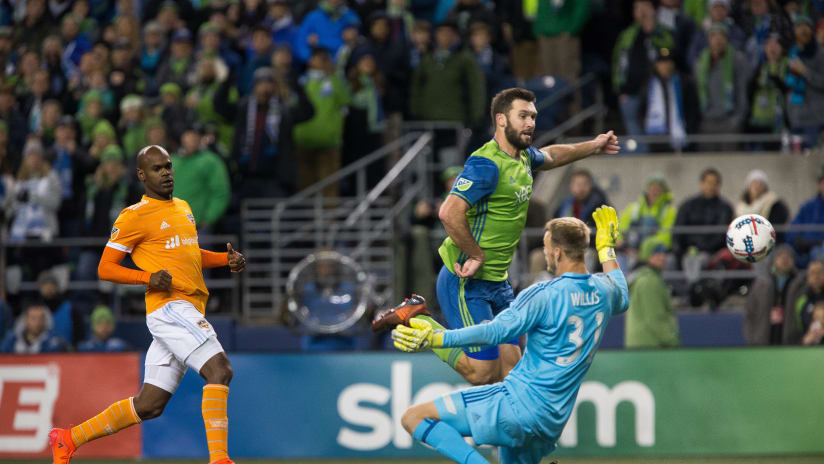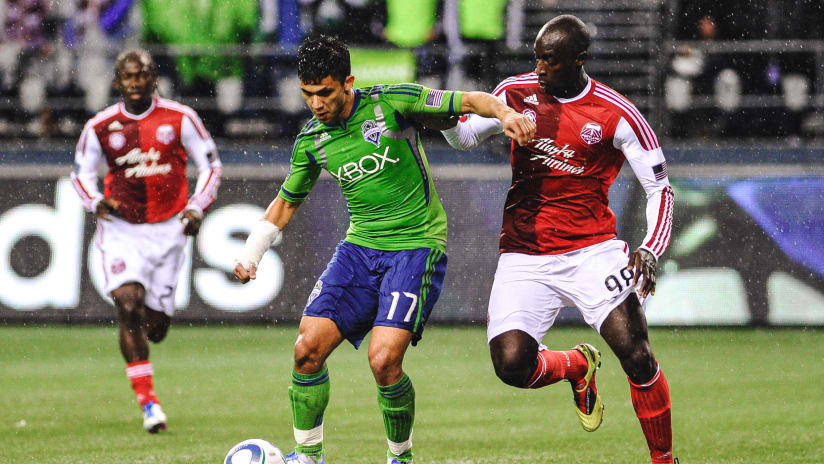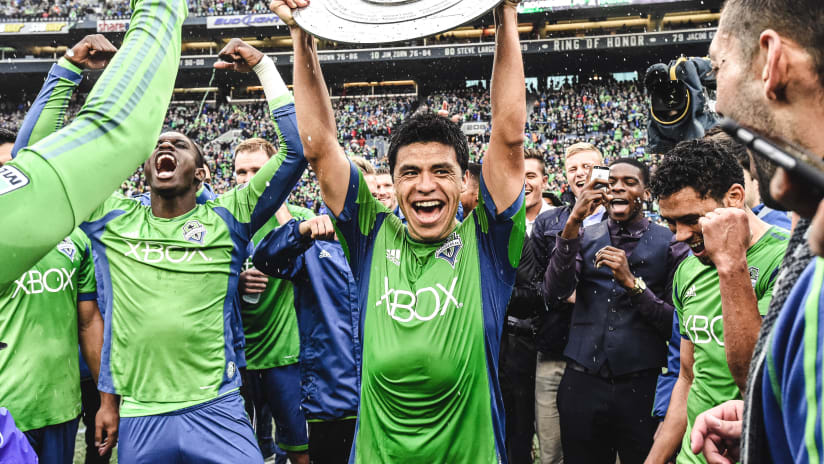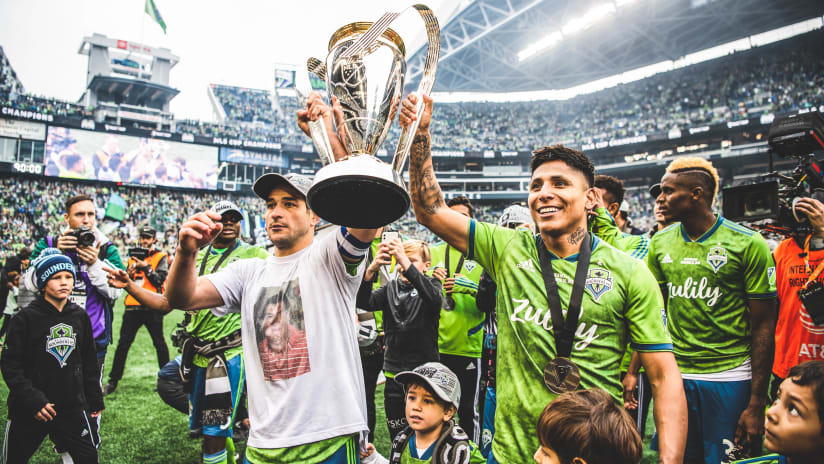When Sounders FC travels north of the border this week to take on Toronto FC in the MLS Cup final for the second consecutive season, they’ll be wary of the Supporters’ Shield winner’s potency in front of goal. Up against TFC’s three-man backline and metronomic midfield, the Rave Green will need to pick and choose their moments carefully to hit in transition by exploiting the space out on the flanks.
There’s no better example of ruthlessly efficient counter-attacking down the wings than the Sounders’ third goal against the Houston Dynamo in the Western Conference Championship.
While the plaudits have rightfully gone to Will Bruin for his cheeky chipped finish, and to Harry Shipp, who supplied the chance with an absurd, outside-the-foot through-ball, the genesis of the lightning-swift counter-attack can be traced back to the team’s defensive shape and the relentless pressing of Nico Lodeiro.
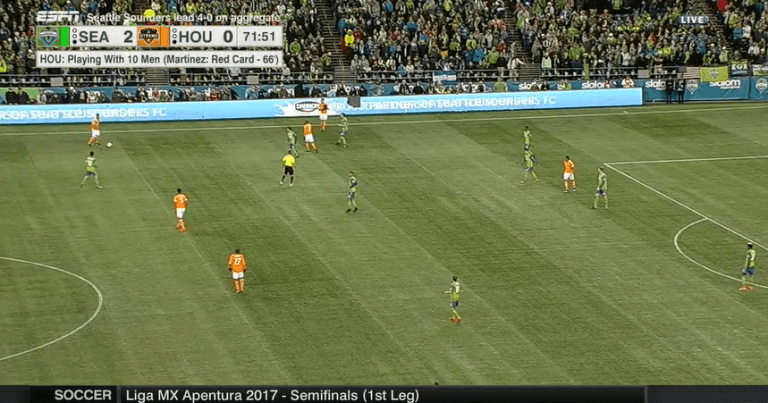
After a period of sustained possession, the Dynamo recovered the ball and slowly progressed their way up the field. Protecting a 2-0 lead, the Sounders dropped into a low-block, setting up with eight players behind the ball.
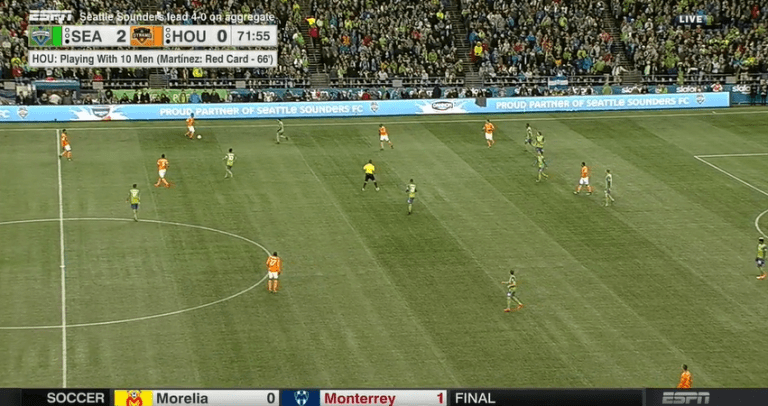
Houston’s left winger, Alex, swapped places with Beasley as the left back pushed higher up the pitch. Alex exchanged a few quick passes with the left-sided center back, Leonardo, which unbalanced the Sounders’ defensive shape.
Recognizing the gap between Rodriguez and Shipp, DaMarcus Beasley showcased his veteran savvy by checking into a pocket of space between the lines. This is where Lodeiro comes in, as the Uruguayan immediately sprinted back to apply pressure on the Houston left back.
His relentless pressure forced Beasley to turn away from goal and, even when he played a pass back to Alex, Lodeiro stayed with the play. Kelvin Leerdam did well to track Cubo Torres as Cristian Roldan slid across to press the forward from the other side, effectively cutting off any passing lanes. And with Lodeiro continuing his movement, he was in the perfect position to pounce on the loose ball and initiate the counter attack.
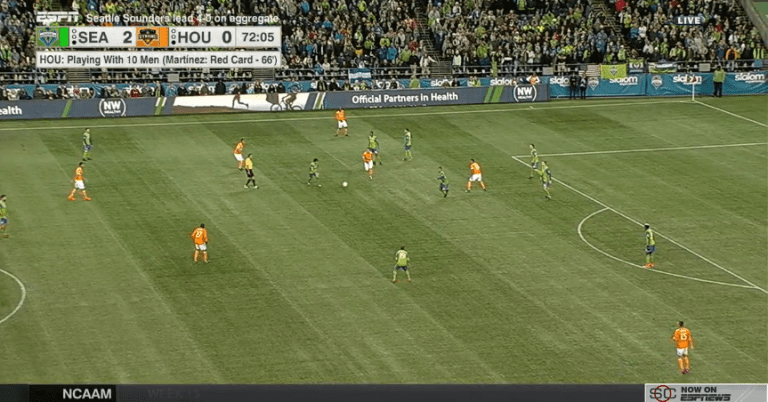
As you can see in the picture above, Shipp was parallel to Lodeiro at the moment he jumped on Torres’ turnover, while Victor Rodriguez was only a few yards ahead of him, off to the right side. In the left-hand corner of the frame, you can see that Bruin checked into the gap between the lines the second Houston coughed up possession.
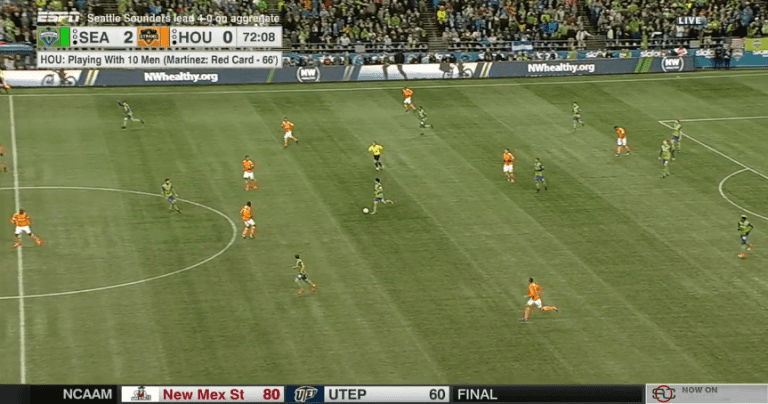
But as you can see, by the time Lodeiro actually got on the ball, both Shipp and Rodriguez started making diagonal runs to the flanks, utilizing the acres of space out wide with just the two Houston center backs ahead of them. When you’re looking to hit a team on the counter, especially against a three-man backline like Toronto’s, you need runners to push high and wide, forcing defenders to choose between tracking runners or denying a central lane to goal.
What Lodeiro did so well was to take a few extra touches as he drove up the middle. This kept Juan Cabezas and Boniek Garcia central, whereas Garcia should have been tracking the run of Shipp. Lodeiro identified this mistake, and with Dylan Remick so far up the pitch, he was able to release his teammate into acres of space.
It’s worth pointing out that Lodeiro got some help from Bruin on this play. His starting position also forced the two Dynamo midfielders to stay central because they wanted to deny a passing lane to the feet of the forward. Bruin noticed this and actually shouted for Lodeiro to play the ball to Shipp. Once he did, Bruin began his incisive run between the two center backs.
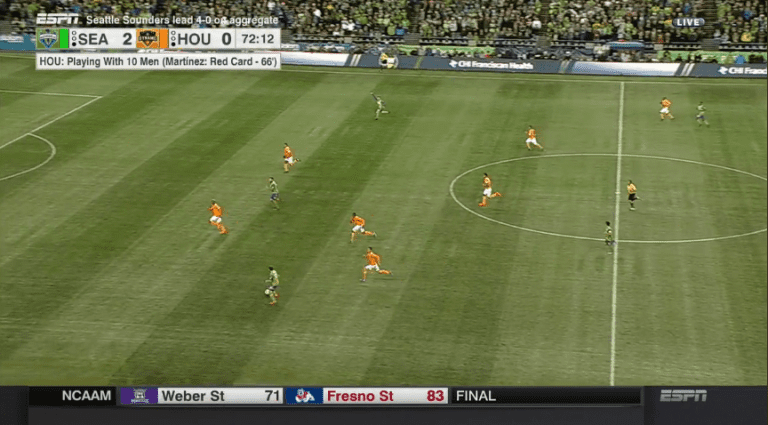
The above photo shows the exact moment when Shipp played that audacious through-ball to Bruin for the third goal. With Shipp and Rodriguez pushed high and wide, there’s a huge gap between the center backs for Bruin to exploit. Up against Toronto’s three-man backline, it will be a similar situation, with the Reds’ trio of center backs forced to defend 1v1, covering the entire width of the field.
While the center backs were caught in no-man’s land, trying to figure out whether or not to step to Shipp, Bruin pointed to the exact spot he wanted the pass and accelerated through the gap. The former Chicago Fire Homegrown spotted the run and slipped him in with what was arguably the pass of the season. Not to be outdone, Bruin, surrounded by Houston defenders and impeded by Joe Willis, dinked the ball over the onrushing goalkeeper.
A pair of passes was all it took to drive the length of the field and carve apart the visitor’s backline. When put through on goal, Bruin kept his cool, waited for Willis to go down early, which he had done on the previous two goals, and lifted the ball over the goalkeeper.
When the Sounders take on TFC in MLS Cup, they’ll need to be just as precise when they attack in transition. If the Rave Green midfielders can force Michael Bradley and Marky Delgado to stay central, like Lodeiro did to Cabezas and Garcia, Seattle will get plenty of 3v3 opportunities by pushing the wingers high and wide. If they do this, there will be similar gaps for Bruin to hit, and the Sounders will have a great shot at defending their Cup.

